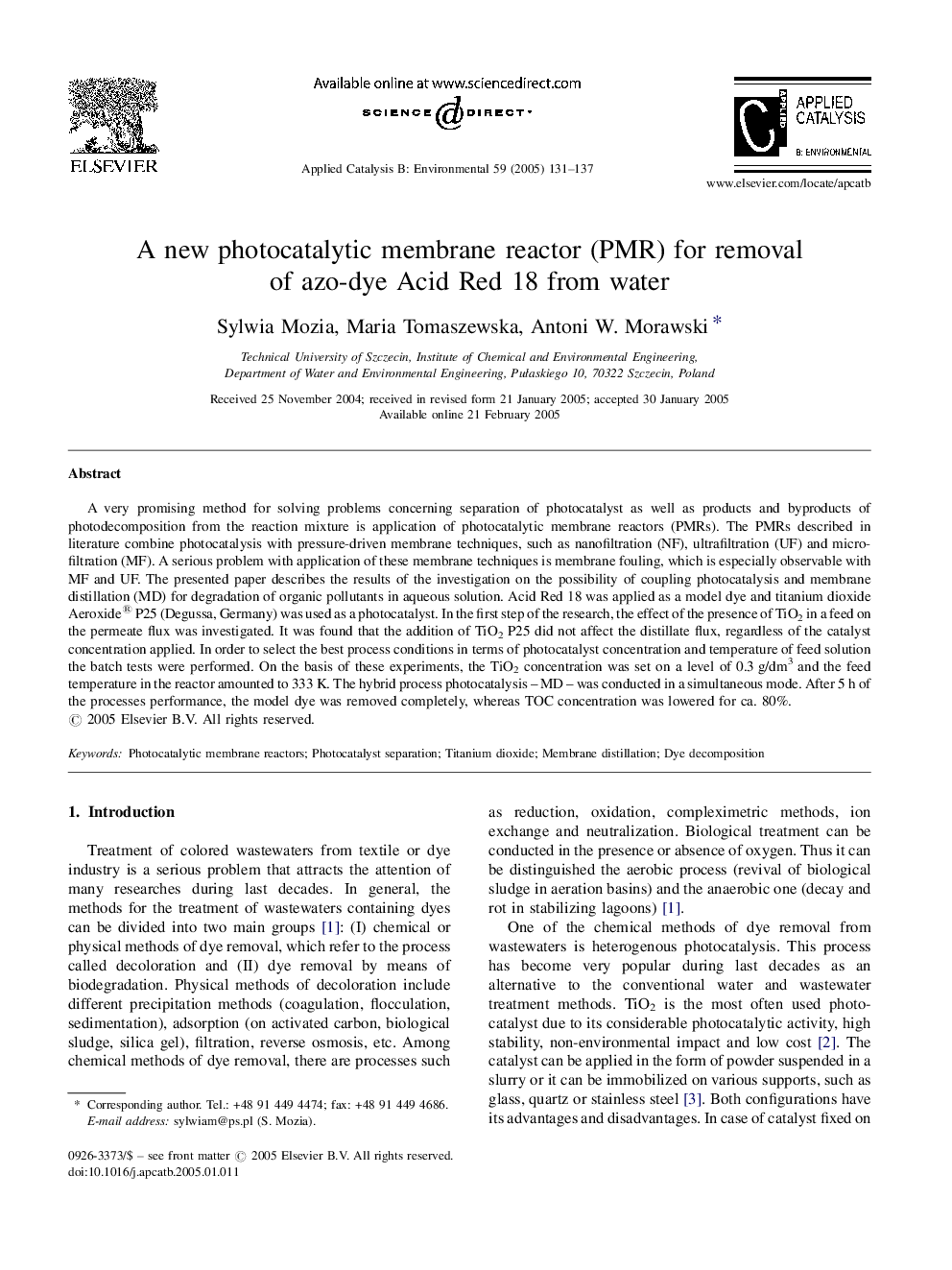| Article ID | Journal | Published Year | Pages | File Type |
|---|---|---|---|---|
| 9609877 | Applied Catalysis B: Environmental | 2005 | 7 Pages |
Abstract
A very promising method for solving problems concerning separation of photocatalyst as well as products and byproducts of photodecomposition from the reaction mixture is application of photocatalytic membrane reactors (PMRs). The PMRs described in literature combine photocatalysis with pressure-driven membrane techniques, such as nanofiltration (NF), ultrafiltration (UF) and microfiltration (MF). A serious problem with application of these membrane techniques is membrane fouling, which is especially observable with MF and UF. The presented paper describes the results of the investigation on the possibility of coupling photocatalysis and membrane distillation (MD) for degradation of organic pollutants in aqueous solution. Acid Red 18 was applied as a model dye and titanium dioxide Aeroxide® P25 (Degussa, Germany) was used as a photocatalyst. In the first step of the research, the effect of the presence of TiO2 in a feed on the permeate flux was investigated. It was found that the addition of TiO2 P25 did not affect the distillate flux, regardless of the catalyst concentration applied. In order to select the best process conditions in terms of photocatalyst concentration and temperature of feed solution the batch tests were performed. On the basis of these experiments, the TiO2 concentration was set on a level of 0.3Â g/dm3 and the feed temperature in the reactor amounted to 333Â K. The hybrid process photocatalysis - MD - was conducted in a simultaneous mode. After 5Â h of the processes performance, the model dye was removed completely, whereas TOC concentration was lowered for ca. 80%.
Related Topics
Physical Sciences and Engineering
Chemical Engineering
Catalysis
Authors
Sylwia Mozia, Maria Tomaszewska, Antoni W. Morawski,
